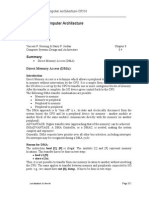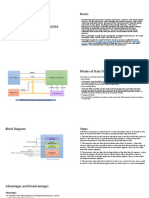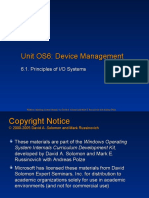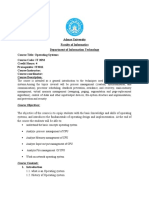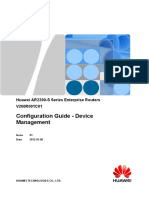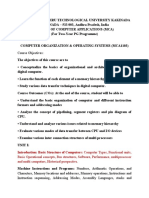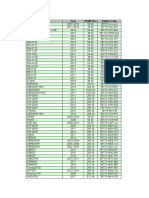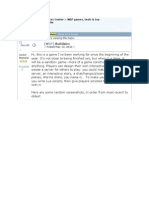DIRECT MEMORY
ACCESS(DMA)
NAME:HARISH CHANDRA MAHANTA
ROLL NO:18
STREAM:BSC(ITM) 3RD SEM
KUSHAGRA INSTITUTE OF INFORMATION AND MANAGEMENT SCIENCE
CONTENTS
WHAT IS DMA ?
PRINCIPLE
DMA OPERATION
DMA IN COMPUTER ARCHITECTURE
POTENTIAL IMPROVEMENT OF DMA
USES
LIMITATION
CONCLUSION
WHAT IS DMA ?
DIRECT MEMORY ACCESS(DMA) is a feature of modern
computers and microprocessors that allow certain
hardware subsystems within the computer to access
system memory for reading and writing independently
of the central processing unit.
Many hardware systems use DMA including disk drive
controllers , graphic cards , network cards , and sound
cards.
DMA is used for transferring data between the local
memory and the main memory .
PRINCIPLE
DMA is an essential feature of all modern
computers , as it allows devices to transfer data
without subjecting the CPU to a heavy overhead.
Otherwise , the CPU would have to copy each
piece of data from the source to destination ,
making itself unavailable for other tasks.
This situation is aggravated because access to I/O
devices over a peripheral bus is generally slower
than the normal system RAM.
DMA OPERATION
There are three independent channels for DMA
operation :
SINGLE TRANSFER
BLOCK TRANSFER
BRUST BLOCK TRANSFER
SINGLE TRANSFER
SINGLE TRANSFER – each trigger causes a single
transfer .
The module will disable itself when DMAXSZ number
of transfers have occurred (setting it to zero prevents
transfer).
The DMAXSA and DMAXDA registers set the addresses
to be transferred to and from.
The DMAXCTL register also allows these addresses to
be incremented or decremented by one or two bytes
with each transfer.
BLOCK TRANSFER
BLOCK TRANSFER – an entire block is transferred
on each trigger .
The module disables itself when this block
transfer is complete.
This transfer halts the CPU , and will transfer
each memory location one at a time.
This module disables the module when the
transfer is complete.
BURST- BLOCK TRANSFER
BURST BLOCK TRANSFER – this is very similar to
block transfer mode except that the CPU and the
DMA transfer can interleave their operation.
This reduces the CPU to 20% while the DMA is
going on , but the CPU will not be stopped
altogether.
The interrupt occurs when the block has
completely transfer and this mode disables the
module when the transfer is complete.
USES
DMA is essential to high performance embedded
systems.
It is also essential in providing so called zero copy
implementations of peripheral device drivers as well
as functionalities such as network packet routing ,
audio playback and streaming video.
Normal transfer of one data byte takes up to 29 clock
cycles . The DMA transfer requires only 5 clock cycles.
Nowadays , DMA can transfer data as fast as 60 M byte
per second.
LIMITATIONS
Writing to flash requires setting the DMA ON
FETCH bit . If this is not done , the results of the
DMA operation are “unpredictable”.
Also the behaviour and settings of the DMA
module should only be modified when the module
is disabled.
Each DMA channel has its own flag but the
interrupt vector is shared with the DAC .
CONCLUSION
DMA is essential to high performance
embedded systems and also playing an
essential feature of all modern
computers , as it allows devices to
transfer data without subjecting the
CPU to a heavy overhead .









































